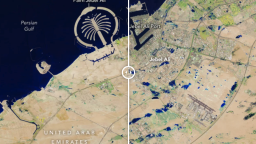When Mount Ruang in Indonesia underwent multiple explosive eruptions last week, volcanic gases were flung so high they reached the atmosphere’s second layer, tens of thousands of feet above ground.
Ruang’s eruptions ejected a massive ash plume and sent some volcanic gases more than 65,000 feet into the air, according to satellite estimates – about 25,000 feet higher than a commercial airplane will typically fly.
The eruption’s potential impacts to weather and climate are starting to come into focus, even as the danger posed by the volcano persists and evacuations continue.
It’s possible for volcanoes to have a short-term impact on the climate – including global temperature cooling – due to the gases they inject high into the upper atmosphere. But Mount Ruang’s influence on the climate will likely be minimal, according to Greg Huey, the chair of Georgia Tech’s School of Earth and Atmospheric Sciences.
And the day-to-day weather conditions near Mount Ruang – things like temperature, clouds and rain – probably won’t be influenced by the volcano for long, Huey told CNN.
Mount Ruang, a 2,400-foot (725-meter) stratovolcano on Ruang Island in Indonesia’s North Sulawesi province, has erupted at least seven times since Tuesday night, the country’s volcanology agency said. Stratovolcanoes can produce explosive eruptions because their cone shape allows gas to build up, according to volcanologists.
